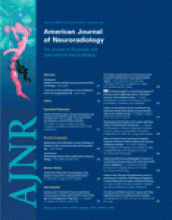Abstract
BACKGROUND AND PURPOSE: Although mechanical thrombectomy (MT) has an encouragingly high recanalization rate in treating stroke, it is associated with severe complications of which the underlying factors have yet to be identified. Because MT is a mechanical approach, the mechanical properties of the thrombus might be crucial for its success. The present study assesses the effect of thrombus length on the in vivo effectiveness and complication rate of MT.
MATERIALS AND METHODS: Angiography and embolization of 21 cranial vessels with radiopaque whole-blood thrombi 10, 20, and 40 mm in length (7 occlusions each) were performed in 7 swine. MT was carried out using a distal snarelike device (BCR Roadsaver) with proximal balloon occlusion. A total of 61 retrievals were attempted.
RESULTS: In the group of 10-mm occlusions, 77.8% of the attempts achieved complete recanalisation. For longer occlusions, the success rates decreased significantly to 20% of attempts for 20-mm occlusions (odds ratio [OR], 14; 95% confidence interval [CI], 2.2–89.2) and 11.1% for 40-mm occlusions (OR, 28; 95% CI, 3.9–202.2; P < .005). The low success rates were largely due to complications associated with thrombus compaction during retrieval. Similarly, the rate of thromboembolic events increased from 0% in 10-mm occlusions to 14.8% in 40-mm occlusions.
CONCLUSIONS: MT using a distal device proved to be a fast, effective, and safe procedure for recanalizing short (10-mm) occlusions in the animal model. However, occlusion length emerged as a crucial determinant for MT with a significant decrease in recanalization success per attempt and increased complication rates. These findings suggest limitations of MT in the clinical application.
- Copyright © American Society of Neuroradiology












